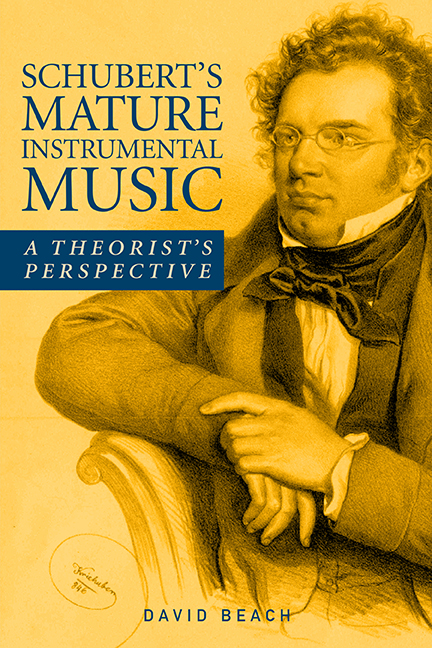Summary
We will be examining two movements from the late quartets in some detail in this chapter: (1) the first movement from the Quartet in A Minor, D. 804, often referred to as the “Rosamunde” Quartet, since the theme of the second movement is based on one from the incidental music for Rosamunde; and (2) the first movement of the Quartet in D Minor, called “Death and the Maiden” because of the set of variations in the second movement based on Schubert's Lied “Der Tod und das Mädchen.” Both quartets were written in 1824, the A-Minor in February/ March and the D-Minor immediately thereafter. The “Rosamunde” was dedicated to Ignaz Schuppanzigh, the first violinist in a quartet that premiered several of Beethoven's as well as Schubert's quartets; the first performance was on March 14, 1824. The “Death and the Maiden” Quartet received its initial reading almost two years later in January 1826; the second reading was in the home of the composer Franz Lachner, with Schuppenzigh leading. Both quartets are in the minor mode, but their characters are quite different. One might describe the A-Minor Quartet as melancholy, but the mood of the D-Minor is darker, even despairing—a reflection of Schubert's contemplation on his own mortality and impending death.
Quartet in A Minor, D. 804 (I)
In some respects this beautiful movement is one of the most conservative—that is, least innovative—of Schubert's late works, but that by no means implies it is lacking in interest. For example, it demonstrates many of the items discussed in chapter 2 regarding hypermeter (changing hypermeter, metric reinterpretation, and successive downbeat measures) and phrase expansion, both external and internal. Regarding the latter, this movement contains clear examples of phrase expansion resulting from repetition of a segment of a phrase, extension of a single harmony (often chromatically transformed in the process), and parenthetical insertion. This movement also offers an interesting study in the employment of motives, both pitch and rhythmic types.
An outline of the formal and tonal plan of this movement is provided in table 7.1. Earlier it was noted that this movement is “classical” in its formal and tonal design.
- Type
- Chapter
- Information
- Schubert's Mature Instrumental MusicA Theorist's Perspective, pp. 148 - 173Publisher: Boydell & BrewerPrint publication year: 2017

